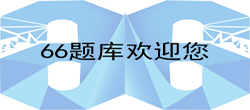题目内容:
Questionsare based on the following passage.I was introduced to the concept of literacy animator in Oladumi Arigbede's (1994) article on high illiteracy rates among women and school dropout rates among girls. According to Arigbede, literacy animators view their role as assisting in the self-liberating development of people in the world who are struggling for a more meaningful life. Animators are a family of deeply concerned and committed people whose gut-level rejection of mass human pauperization (贫民) compels them to intervene
on the side of the marginalized (使处于社会边缘 ). Their motivation is not derived from a love of literacy as merely another technical life skill, and they accept that literacy is never culturally or ideologically neutral.
Arigbede writes from her experiences as an animator working with women and men in Nigeria. She believes that literacy animators have to make a clear choice about whose culture and whose ideology will be fostered among those with whom they work. Do literacy educators in the United States consider whether the instruction they pursue conflicts with their students' traditional cultures or community, or fosters illiteracies in learners' first or home languages or dialects and in their orality?
Some approaches to literacy instruction represent an ideology of individualism, control, and competition. Consider, for example, the difference in values conveyed and represented when students engage in choral reading versus the practice of
having one student read out loud to the group. To identify as a literacy animator is to choose the ideology of "sharing,
solidarity, love, equity, co-operation with and respect of both nature and other human beings". Literacy pedagogy that matches the animator ideology works on maintaining the languages and cultures of millions of minority children who at present are being forced to accept the language and culture of the dominant group. It might lead to assessment that examines the performance outcomes of a community of literacy learners and the social significance of their uses of literacy, as opposed to measuring what an individual can do as a reader and writer on a standardized test. Shor ( 1993 ) describes literacy animators as problem-posing, community-based, dialogic educators. Do our teacher-education textbooks on reading and language arts promote the idea that teachers should explore problems from a community-based dialogic perspective?
注意:此部分试题请在答题卡2上作答。
A literacy animator is one who ____ A. struggles for a more meaningful life
B. frees people from poverty and illiteracy
C. is committed to marginalize the illiterate
D. is concerned with what is behind illiteracy
参考答案:
答案解析:

